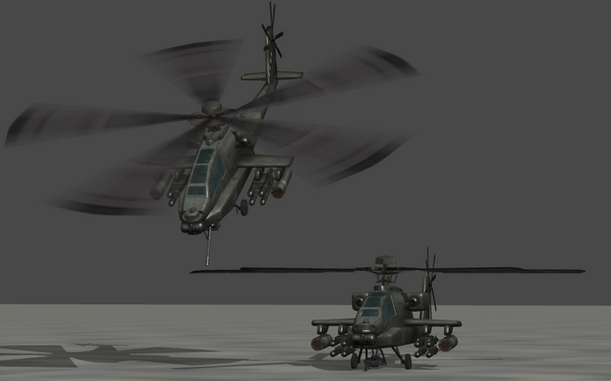HOME | DD
 StupolevBear — FAH-29C Kestrel Fast Assault Helicopter
StupolevBear — FAH-29C Kestrel Fast Assault Helicopter

#aircraft #attackhelicopter #blender #helicopter #military #modern #vehicle
Published: 2020-07-25 02:55:10 +0000 UTC; Views: 11832; Favourites: 155; Downloads: 68
Redirect to original
Description
FAH-29C "Kestrel" Fast Assault HelicopterLength: 19.3m
Height: 7.1m
Width: 10m
Weight: 9000kg (Empty)
Maximum take-off weight: 18000kg
Maximum Speed: 400kph (Never Exceed: 650kph)
Primary Armament: 30C4A2 four-barrel 30mm gatling gun (30x173mm) with 1200 rounds carried, 6 x pylons
Engine: 2 x Merlin TS-87 turboshaft engine (2000shp)
Protection: 4 x Laser Warning Receiver, Radar Warning Receiver, chaff/flare launcher, optional jamming pod
The FAH-29C Kestrel, is an all-weather twin-turboshaft coaxial-rotor attack helicopter with two-crew tandem cockpit, the Kestrel carries a 30mm gatling gun and three pylons on each wings.
The Kestrel during its time of introduction, is the largest helicopter in the Federal Armed Forces possession with a length of 19.3m and a wingspan of 10m.
The Kestrel was designed with anti-shipping and anti-tank mission in mind, the Kestrel utilizes a coaxial rotor design to allow it to carry a wide range of payloads such as torpedoes, anti-ship missiles, anti-tank missiles, bombs, unguided rockets, etc.
Despite its size and weight, the Kestrel is quite fast capable of reaching a speed of 400kph and capable of maneuvering between high rise buildings of large cities.
Development of this helicopter began in the early 80s, when the Federal Air Force seeks to develop a dedicated attack helicopter to replace their converted A/TH-65 attack transport helicopters for anti-tank missions, the original design uses a conventional four-bladed rotor with a three-bladed tail rotor, the requirement soon changes when the Federal Navy joined the development.
The first Kestrel prototype is armed with a 30mm chain-gun and four pylons to carry anti-ship missiles or anti-tank missiles in quadruple racks, this was found inadequate by generals overlooking the test. On the second prototype, the gun was changed into a four-barrel 30mm gatling gun and another pylon is added into each wings, the engine was also changed into the more powerful Merlin TS-87 turboshaft engine, the second prototype was loaded to the brim with 32 units of Hornisse-LS missiles and four 70mm rocket pods with 20 rockets on each pod.
The second prototype was deemed overkill by onlookers, the generals however were satisfied, "There is no such thing as overkill when you fight communists!" said one of the generals.
Low rate production began in 1989 when the Federal Air Force and Federal Navy ordered a batch of 75 Kestrel, the Kestrel saw combat in the Artorian Civil War where it managed to destroy 197 tanks and 239 armored cars of the Democratic Army and the sinking of the ADNS Merkowa, a Neil Oberstein-class guided missile cruiser of the Democratic Navy, only two Kestrel were lost in combat due to human errors and accident.
Despite its success in combat, its a massive failure in the global arms market, it was huge, heavy, and expensive, a Kestrel could cost as much as two and a half Apache attack helicopter, it was also hard to maintain due to its large size and complex rotor design, even now, only the Federal Republic operates the Kestrel, several nations have expressed interest in the Kestrel however opted for the cheaper Apache or Alligator attack helicopters.























